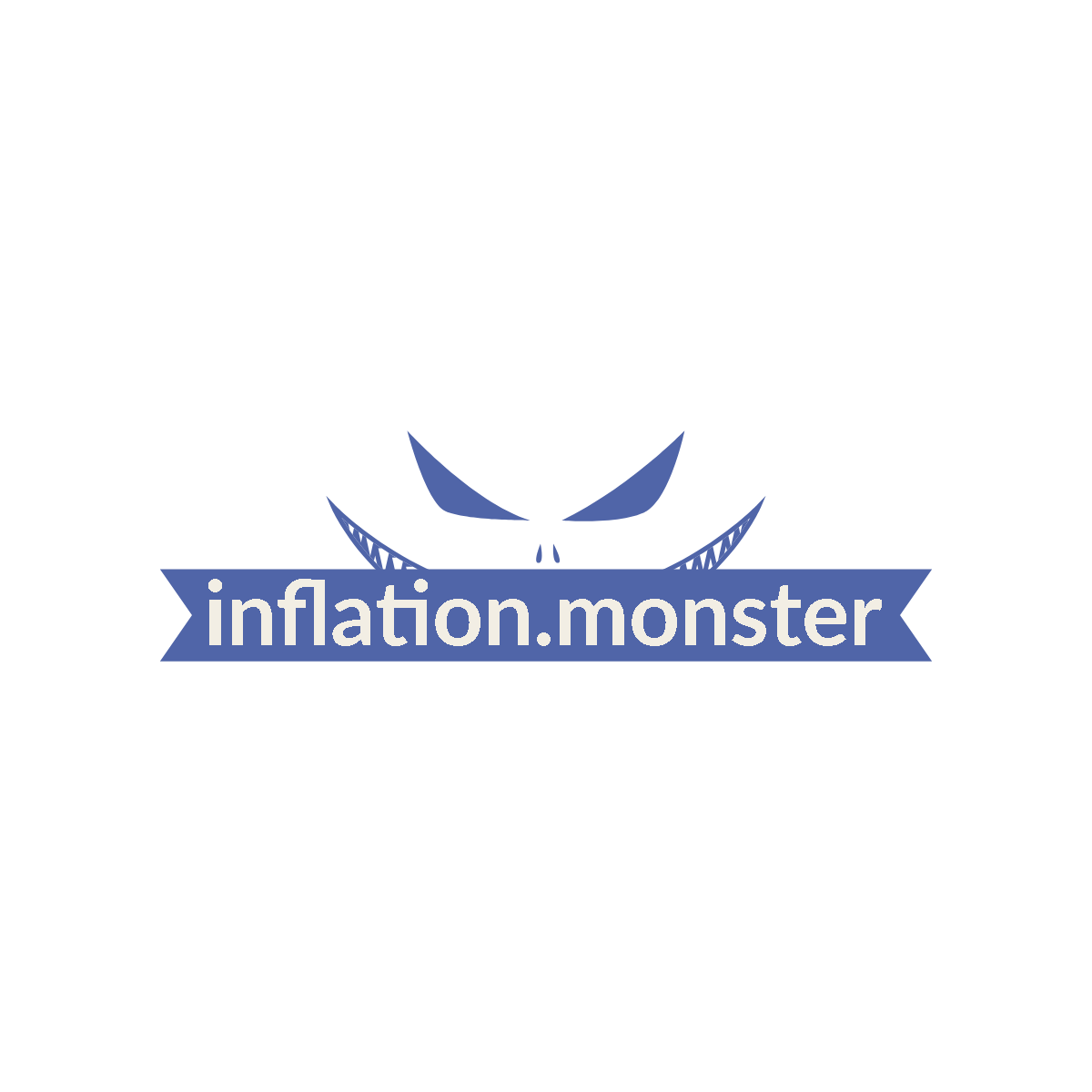Imagine this scenario: you’ve spent years diligently saving for your retirement, looking forward to enjoying a comfortable and worry-free life once you leave the workforce. But there’s a hidden danger lurking in the shadows, silently eroding the value of your hard-earned savings. We’re talking about inflation, that sneaky monster that can significantly impact your plans for a blissful retirement. In this article, we’ll explore the fascinating connection between inflation and the psychology of retirement planning, shedding light on the intricate dynamics at play and arming you with the knowledge to navigate this hidden threat. So buckle up and prepare to dive deep into the world of inflation, as we uncover its impact on your financial future.
The Basics of Inflation
Inflation is a term that is often thrown around in economic discussions, but what does it really mean? Simply put, inflation refers to the overall increase in prices of goods and services over time. When inflation occurs, the purchasing power of currency decreases, which means that the same amount of money can buy fewer goods and services.
Definition of inflation
Inflation can be defined as the sustained increase in the general level of prices for goods and services in an economy over a period of time. It is measured by various inflation indices, such as the Consumer Price Index (CPI) or the Producer Price Index (PPI). These indices track the changes in prices of a basket of goods and services and provide an overall measure of inflation.
Causes of inflation
Inflation can be caused by a variety of factors, including:
-
Demand-pull inflation: This occurs when there is an increase in demand for goods and services, leading to higher prices. When consumers have more purchasing power, they are willing to pay higher prices, which can drive up inflation.
-
Cost-push inflation: This type of inflation occurs when the cost of inputs, such as labor or raw materials, increases. When businesses face higher costs, they may pass on these costs to consumers in the form of higher prices.
-
Monetary inflation: This occurs when there is an increase in the money supply in the economy. When there is more money in circulation, it can lead to higher demand and subsequently higher prices.
Types of inflation
Inflation can also be categorized based on its rate and severity.
-
Mild inflation: This is characterized by a low and relatively stable increase in prices over time. Mild inflation is often seen as a sign of a healthy economy, as it indicates that there is moderate economic growth and consumer demand.
-
Moderate inflation: Moderate inflation refers to a slightly higher rate of price increase compared to mild inflation. While it may still be manageable, moderate inflation can erode the purchasing power of consumers over time.
-
Hyperinflation: This is an extreme form of inflation, characterized by rapid and uncontrollable increases in prices. Hyperinflation can have devastating effects on an economy, leading to a collapse in the value of the currency and severe economic disruptions.
The Impact of Inflation on Retirement Planning
Inflation can have significant implications for retirement planning. As retirees rely on their savings and investments to cover their expenses, the erosion of purchasing power due to inflation can pose several challenges.
Decreasing purchasing power
One of the main impacts of inflation on retirement planning is the decrease in purchasing power over time. When retirees save for retirement, they often have certain financial goals and expectations for their retirement lifestyle. However, as prices increase over the years, retirees may find that their savings are no longer sufficient to maintain their desired standard of living.
Longevity risk
Another important consideration in retirement planning is the risk of living longer than expected. Advances in healthcare and improved living conditions have resulted in longer life expectancies, but this also means that retirees need to plan for a longer retirement period. With inflation eroding the value of money, retirees may find it challenging to make their savings last throughout their extended retirement years.
Market volatility
Inflation can also exacerbate market volatility and pose risks to retirement portfolios. In times of inflation, interest rates may rise, which can impact the value of fixed-income investments such as bonds. Additionally, stock markets may experience increased volatility, making it challenging for retirees to rely on investment returns to fund their retirement.

Behavioral Biases and Retirement Planning
In addition to the financial implications of inflation on retirement planning, there are also behavioral biases that can affect decision-making in retirement.
Anchoring bias
Anchoring bias is a cognitive bias where individuals rely too heavily on a specific piece of information when making decisions. In the context of retirement planning, this bias can manifest when individuals anchor their retirement savings goals to a certain amount without considering the impact of inflation. As a result, retirees may underestimate the amount of savings needed to maintain their desired lifestyle in the face of rising prices.
Loss aversion
Loss aversion refers to the tendency for individuals to prefer avoiding losses over acquiring gains. When it comes to retirement planning, loss aversion can lead retirees to make conservative investment choices, such as allocating a significant portion of their portfolio to low-risk, low-return investments. While this may provide some sense of security, it can also limit the potential for growth and protection against inflation.
Herding behavior
Herding behavior refers to the tendency for individuals to mimic the actions of a larger group. In the context of retirement planning, herding behavior can manifest when retirees make investment decisions based on the actions of others, rather than considering their own individual circumstances and financial goals. This can lead to a lack of diversification and increased exposure to market risks, including the impact of inflation.
Effect of Inflation on Retirement Income
Inflation can have a significant impact on retirement income and the ability to meet ongoing expenses during retirement.
Fixed income challenges
Retirees who rely on fixed income sources, such as pensions or annuities, are particularly vulnerable to the impact of inflation. While these income sources may provide a steady stream of income, they may not have built-in mechanisms to keep up with inflation. As a result, the purchasing power of the fixed income can decline over time, making it difficult for retirees to maintain their desired standard of living.
Need for inflation-linked investments
To counter the impact of inflation on retirement income, retirees may need to consider investing in assets that have the potential to generate returns that outpace inflation. This could include investments such as stocks, real estate, or inflation-protected bonds. By diversifying their investment portfolio and including assets that have historically provided a hedge against inflation, retirees can aim to mitigate the erosion of purchasing power.
Adjusting retirement savings strategies
Inflation also necessitates the need for retirees to regularly review and adjust their retirement savings strategies. This may include increasing savings contributions, extending the working years, or adjusting the investment allocation to include more growth-oriented assets. By taking proactive measures to address the potential impact of inflation, retirees can better position themselves to meet their financial goals in retirement.

Psychological Challenges in Retirement Planning
Retirement planning is not only influenced by financial factors but also by psychological and emotional aspects. In the face of inflation, certain psychological challenges may arise that can impact retirement planning decisions.
Fear of running out of money
The fear of running out of money is a common psychological challenge faced by retirees. With the erosion of purchasing power due to inflation, this fear can be heightened as retirees worry about the sustainability of their savings. This fear can lead to overly conservative investment choices or unnecessary frugality, potentially compromising the quality of life in retirement.
Inflation anxiety
Inflation anxiety is another psychological challenge that can affect retirement planning. The uncertainty and unpredictability of future inflation rates can create anxiety and uncertainty for retirees as they try to plan for their financial security. This anxiety may lead to a reluctance to spend or invest, further exacerbating the impact of inflation on retirement income.
Overconfidence
On the other end of the spectrum, overconfidence can also be a psychological challenge in retirement planning. Some retirees may underestimate the potential impact of inflation on their savings or believe that they can outperform market returns consistently. This overconfidence can lead to inadequate savings or overly aggressive investment strategies, putting retirees at risk of falling short of their financial goals in retirement.
Strategies to Counter Inflation in Retirement Planning
While inflation poses challenges to retirement planning, there are strategies that retirees can employ to mitigate the impact of rising prices and protect their purchasing power.
Diversification of investments
One key strategy is diversifying investments across different asset classes. By spreading investments across stocks, bonds, real estate, and other asset classes, retirees can potentially benefit from the growth potential of various sectors while reducing exposure to any single investment’s volatility.
Real estate as a hedge against inflation
Real estate can serve as a hedge against inflation due to its potential to appreciate over time. As the value of properties increases with inflation, retirees who own real estate assets can benefit from the appreciation and potentially generate rental income that can provide a buffer against rising living expenses.
Investing in commodities
Investing in commodities, such as gold or other precious metals, can also act as a hedge against inflation. When prices rise due to inflation, the value of these commodities tends to increase as well, providing a store of value that can help protect against the erosion of purchasing power.

The Role of Financial Advisors in Inflation-Proof Planning
Financial advisors play a crucial role in inflation-proof retirement planning by helping retirees navigate the complexities of inflation and develop strategies to mitigate its impact.
Educating clients about inflation risks
One of the primary responsibilities of a financial advisor is to educate their clients about the risks of inflation and how it can impact retirement planning. By explaining the concepts and implications of inflation in simple terms, advisors can help retirees understand the need for proactive inflation-proofing strategies.
Creating an appropriate investment portfolio
Financial advisors can help retirees build a well-diversified investment portfolio that accounts for the potential impact of inflation. By assessing the retiree’s risk tolerance, time horizon, and financial goals, advisors can recommend a suitable asset allocation that includes investments known to provide a hedge against inflation.
Regular portfolio rebalancing
As market conditions change and inflation rates fluctuate, it is essential to regularly review and rebalance the investment portfolio. Financial advisors can help retirees stay on track by periodically assessing the performance of investments, making adjustments as needed, and ensuring that the portfolio remains aligned with the retiree’s goals and risk tolerance.
Long-Term Impact of Hyperinflation on Retirement Planning
While mild to moderate inflation can present challenges to retirement planning, hyperinflation can have devastating effects on retirement plans and the overall economy.
Hyperinflation definition and causes
Hyperinflation is an extreme form of inflation characterized by rapid and uncontrollable increases in prices. While there is no specific threshold for defining hyperinflation, it is typically associated with inflation rates of more than 50% per month. Hyperinflation can be caused by factors such as excessive money printing, political instability, or economic crises.
Hyperinflation’s devastating effects on retirement plans
In a hyperinflationary environment, retirees can face severe financial hardships. The rapid and substantial increase in prices can quickly erode the value of savings and pensions, making it virtually impossible to cover basic necessities. Retirees may find themselves unable to afford essential goods and services, leading to a significant decline in their quality of life.
Case studies on hyperinflation’s impact
Several historical case studies provide insights into the devastating impact of hyperinflation on retirement planning. For example, the hyperinflation experienced in Zimbabwe in the late 2000s resulted in retirees losing their entire life savings, pensions becoming virtually worthless, and a sharp increase in poverty rates among older adults. These case studies serve as a stark reminder of the importance of inflation-proofing strategies in retirement planning.
Inflation-Protected Retirement Vehicles
To address the challenges posed by inflation in retirement planning, there are certain retirement vehicles and investments that provide protection against the erosive effects of rising prices.
Social Security and inflation adjustments
Social Security benefits are adjusted annually to account for inflation through the Cost-of-Living Adjustment (COLA). This adjustment aims to ensure that retirees’ benefits keep pace with rising prices, providing some level of protection against inflation. However, it is important to note that the COLA may not fully offset the impact of inflation, particularly for retirees who rely solely on Social Security for income.
Using annuities and pensions as inflation hedges
Annuities and pensions that include inflation protection features can also serve as effective inflation hedges in retirement planning. These financial products provide a guaranteed stream of income for retirees while adjusting for inflation over time. By choosing annuities or pensions that offer inflation adjustments, retirees can mitigate the impact of rising prices on their retirement income.
Government and corporate inflation-protected bonds
Inflation-protected bonds, such as Treasury Inflation-Protected Securities (TIPS), are government-issued bonds that provide investors with protection against inflation. These bonds are designed to adjust their principal value and interest payments based on changes in consumer prices, ensuring that investors’ purchasing power is preserved. Corporate bonds with inflation-protection features can also be considered for retirees seeking additional income stability in an inflationary environment.
Strategies for Adjusting Retirement Planning in Inflationary Periods
Retirees need to be proactive in adjusting their retirement planning strategies to account for inflation and its potential impact. Here are some strategies to consider:
Monitoring inflation rates
Retirees should stay informed about inflation rates and understand how changes in prices can impact their retirement income. By monitoring inflation indicators, such as the CPI, retirees can make informed decisions about their spending, investment, and savings strategies.
Regularly updating retirement savings goals
As inflation erodes the purchasing power of money over time, it is essential to reassess retirement savings goals periodically. Retirees should consider adjusting their savings targets to ensure that they are accounting for the potential impact of rising prices on their future expenses.
Flexibility in retirement expenses
Flexibility in retirement expenses is crucial in an inflationary period. Retirees may need to adjust their spending habits and prioritize essential expenses while being prepared to make changes to discretionary expenses if necessary. By maintaining flexibility and being adaptable, retirees can navigate the challenges posed by inflation effectively.
In conclusion, understanding the basics of inflation and its impact on retirement planning is essential for retirees to develop effective strategies to protect their purchasing power and ensure financial security throughout their retirement years. By considering the causes and types of inflation, as well as the psychological challenges it presents, retirees can make informed decisions about their savings, investments, and retirement income sources. With the guidance of financial advisors and the use of inflation-protected retirement vehicles, retirees can better navigate the complexities of inflation and adjust their retirement planning strategies to counter its erosive effects. The long-term impact of hyperinflation serves as a reminder of the need for proactive inflation-proofing measures, and by implementing strategies such as diversification, real estate investments, and monitoring inflation rates, retirees can enhance their chances of maintaining a comfortable retirement lifestyle despite the challenges posed by inflation.




